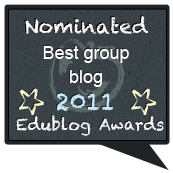There is a definite buzz in the air. The new unit has started. Students are excited and eager to know what we will be inquiring into.
 |
| TUNING-IN as it rains outside. All we needed was hot chocolate milk 🙂 |
Our new unit on Natural Hazards has just completed its first week. I had to pull things down from my boards and so they look fairly bare, but we do a lot reading and reflecting everyday, so it is slowly filling up with students’ work.
We worked on the L poster twice. The second time to sort out the information.
 |
| Cooperation, the “Attitude” being the lens though which we peer at the unit. |
I will be creating a lot of scenarios where the students will have to work in groups as they need to learn to cooperate and organize themselves. Learning about how cooperation feels like, sounds like and looks likes was a very fruitful learning engagement. It set the tone and mood for the unit. The students keep referring to the board whenever there is a conflict. Most of them, to my great surprise and glee, resolve their conflict without adult intervention. I hear talk such as:
The students are working on their own choice of hazard. They are using all phases of the inquiry cycle to guide them. As they were “finding out” they had to reflect on their findings to see whether they were addressing their guiding questions. Kids do tend to get distracted and deviate from tasks. I do too. At times, they asked questions which caused them to go further and deepen their understanding. For example, how is the sound of a tornado alert different from that of an ambulance? As I walked around, I saw information scattered all over their posters. It was hard to locate information. How could they present it so that I could easily find answers to my questions? They clearly realized they needed to “Sort out” the information. Three days of hard work on posters had to be undone.
They understood why.
These students are amazing and a determined lot. They have come up with posters that reflect most areas of the inquiry cycle.
A student took charge of a 45 minute lesson to demonstrate how some of the disasters occur.( I am glad he chose not to do the volcano experiment because it does not really address any on our learning outcomes.) This child is usually very quiet and reticent. But he changed a lot during this unit. The power of emotional connect with the topic was very evident here.
 |
| How cyclones look from a satellite picture using water and tissue paper. |
 |
| The nature of a tornado |
Consolidating, researching, cooperating…
You will notice how we start with 1 and lead on to 4 in the continuum. One of the main criticisms about rubrics is that it curtails excellence. Who decides what is the best? Why should we start with the best when the best can always be outdone!
Our inquiry cycle continues. We will be using tools and learning strategies that help the student delve deeper into the content. Let’s see where it takes us!
















Naini,
I love the way you step us through this inquiry. Don’t apologise for the length of the post! I always like to see samples and hear quotes of what students are saying and see evidence of their thinking. It always helps me as I develop inquiries in my classroom. It looks like you have a very engaged class! Many thanks!
Lindy
LikeLike
Thanks Lindy. Happy to share.
LikeLike
I love the fact you logged your entire inquiry. I am also doing a Unit on Natural Disasters. Could I get a list of your children’s experiments ? You have inspired me to log my current UOI and Blog about it.
LikeLike
HI I’m not sure how I shall address you as. Dwanyne, I’m guessing? The experiments were as follows. the first one I initiated during the tuning in…which was amazing. I forgot to include it in the blog.I put a number of materials in 4 ziplock bags -foil, plastic sheet, string, 70 cm tape, and whatever you can think of) then made groups of 4 students. The had to build a house with them. Then I used a really powerful blower to blow their house away. The focus was on cooperation and using the materials wisely, creatively. The student who came up with the experiments did the following: Tsunami:In a tray, he filled half of it with sand . It tapered off like a beach. He put a few cubes to mimic buildings. He then added water to the rest of the tray and with a jerk he swayed the water back and let it come frwrd with a force to emulate how water behaves when it
Hurricane:very simple but looked fabulous just like the satellite pictures. He put tissue paper in a pail of water and swirled it with his hands 🙂 We spoke of forces , wind and atmospheric disturbances which create such swirls. Tornado:Two bottles attached at rim with lots of masking tape. One has water at the bottom. turn the bottle and quickly swirl it. A tornado forms inside. Quite fascinating to watch the mini tornado. There you go! RegardsNaini
> Date: Thu, 5 Dec 2013 07:16:44 +0000 > To: naini_basu@hotmail.com >
LikeLike
I think that is what a PLN is all about. 🙂
LikeLike
Thanks for this! It’s not often that I have the opportunity to see how another teacher’s inquiry has progressed – lots of ideas to steal :).
LikeLike
You’re welcome!
LikeLike
Teacher’s don’t steal we borrow for “fare use” 🙂
LikeLike
Pingback: Inquiry-Based Staff Orientation – Making Good Humans